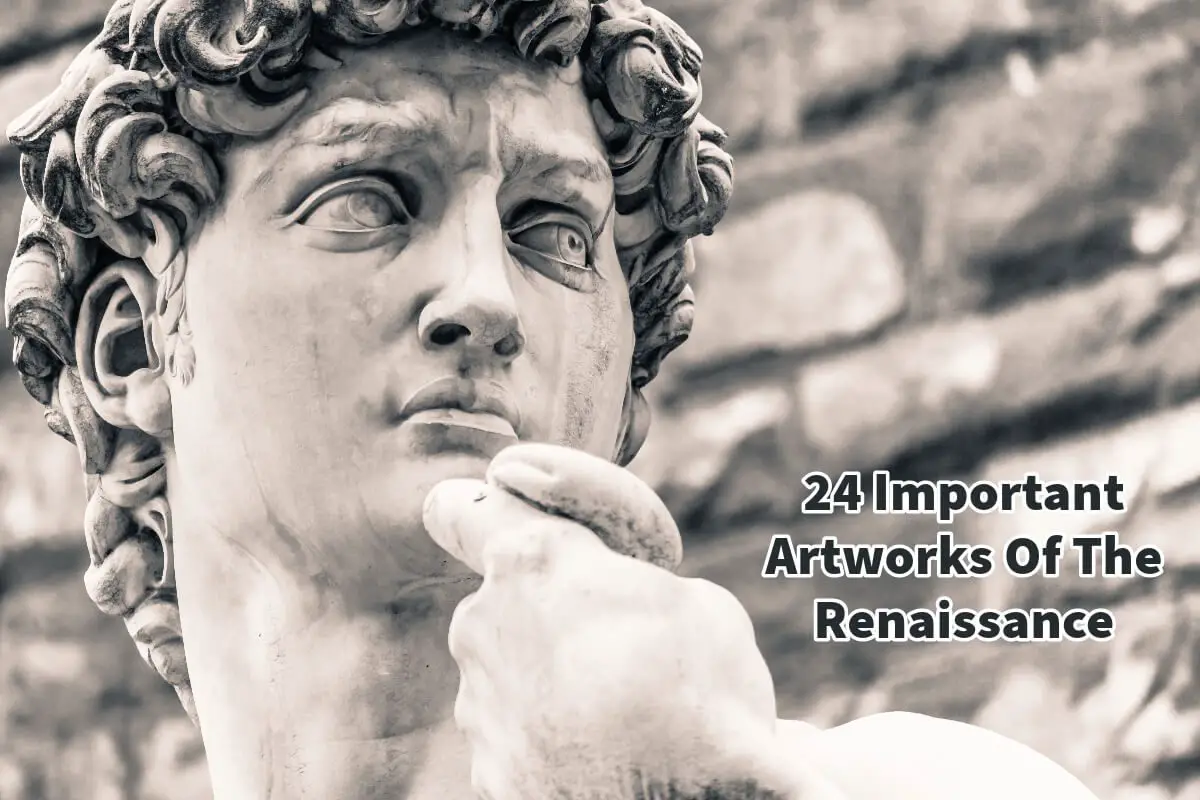The Renaissance period is indispensable for anyone delving into art history. The era stands as one of the most pivotal and transformative phases in the artistic landscape, characterized by a profound reawakening of classical ideals, unprecedented innovation in techniques, and a focus on human experience and emotion.
During this seminal period, many extraordinary artists emerged, leaving an indelible impact on art, culture, and thought. The Renaissance was a revolutionary period in art history that spanned from roughly the 14th to the 17th century. It marked the transition from the medieval period to the modern age and was characterized by an interest in classical art, perspective, realism, and human emotion. Read on as we explore some of the most important works from this era of art.
Table of Contents
- 24 Important And Significant Artworks Of The Renaissance
- The School of Athens
- The Birth of Venus
- The Last Supper
- The Creation of Adam
- Mona Lisa
- The Last Judgment
- Primavera
- The Sistine Madonna
- Pieta
- Venus of Urbino
- David
- The Arnolfini Portrait
- Assumption of the Virgin
- Bacchus and Ariadne
- Adoration of the Magi
- Sistine Chapel Ceiling
- Virgin of the Rocks
- Self-Portrait at the Age of Twenty-Eight
- Madonna and Child
- Transfiguration
- Ognissanti Madonna
- Lamentation of Christ
- Portrait of a Young Man
- The Ambassadors
- Frequently Asked Questions
- Related Questions
24 Important And Significant Artworks Of The Renaissance
The Renaissance artistic masterpieces remain revered today, not merely as artworks but as monumental contributions to human civilization. The artists of the Renaissance—figures like Leonardo da Vinci, Michelangelo, Raphael, and Titian, among others—pushed the boundaries of what art could accomplish.
These artists experimented with perspective to create three-dimensional space on a flat surface, employed new methods of shading and contouring to bring lifelike detail to figures and faces, and infused their works with emotional and intellectual complexity.
Works from this era, such as Leonardo’s “Mona Lisa” and “The Last Supper,” Michelangelo’s Sistine Chapel ceiling, and Raphael’s “The School of Athens,” have transcended their time and place to become universally recognized icons. Their brilliance lies not just in their aesthetic or technical achievements but in their capacity to encapsulate the intellectual and cultural enthusiasm of the Renaissance itself.
Moreover, the art of this period was often profoundly interwoven with the scientific, religious, and philosophical discourses of the time, offering valuable insights into the era’s shifting worldviews. Paintings, sculptures, and architectural works were not just objects of beauty but complex embodiments of society’s values, beliefs, and aspirations.
Read on as we explore 24 of the most important works of art produced in the Renaissance era.
The School of Athens
Artist: Raphael
Year: 1509–1511
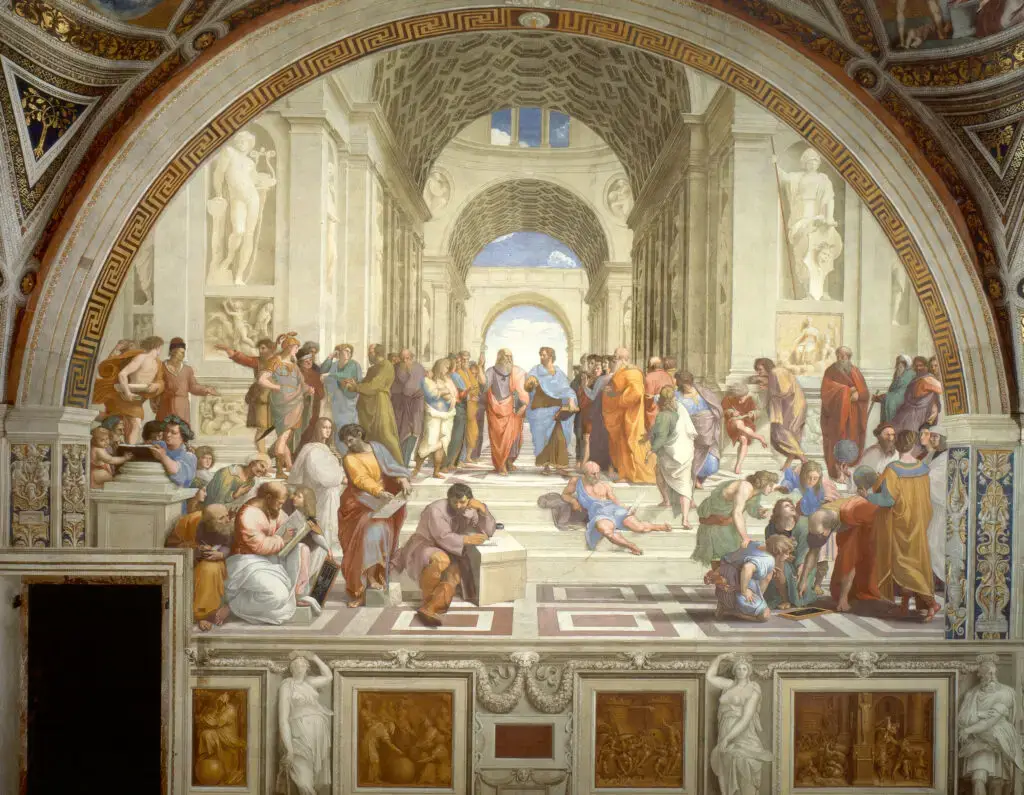
This fresco is a celebration of philosophy and features many prominent ancient thinkers. It’s known for its perfect perspective and the distinct characterizations of each figure. Pope Julius II commissioned it for the Vatican.
The Birth of Venus
Artist: Sandro Botticelli
Year: 1485–1486
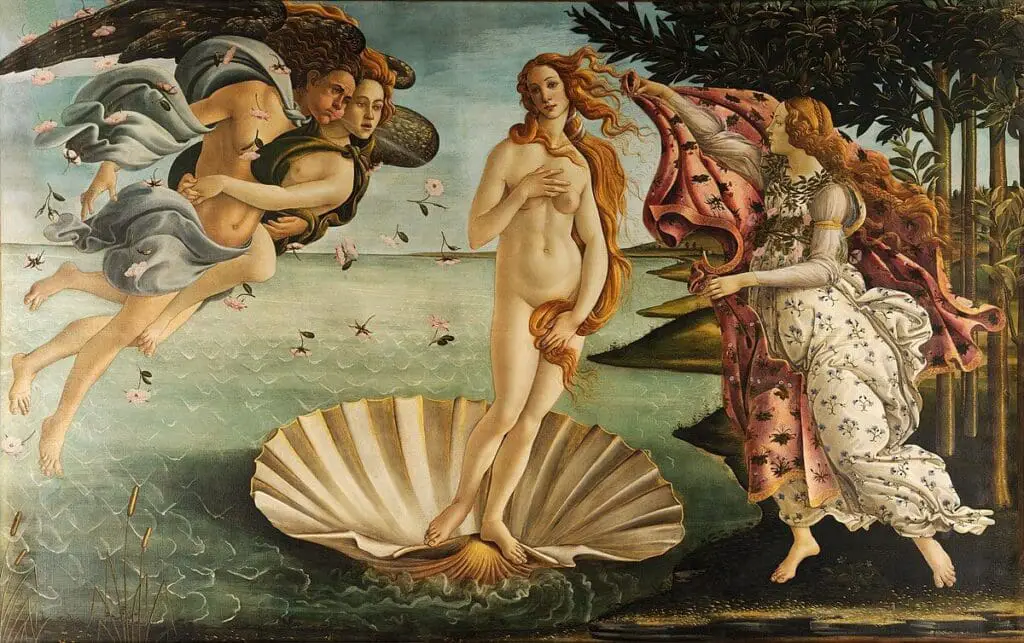
This painting showcases Venus emerging from the sea. It reflects the influence of classical mythology and is known for its flowing lines and sense of grace.
The Last Supper
Artist: Leonardo da Vinci
Year: 1495–1498

One of the most famous paintings in the world depicts Jesus and his disciples when Jesus announces that one of them will betray him. The painting is notable for its emotional intensity and realistic detail.
The Creation of Adam
Artist: Michelangelo
Year: 1511–1512

Part of the Sistine Chapel ceiling, this painting shows God reaching out to give life to Adam. It’s celebrated for its anatomical accuracy and the dynamism between the figures.
Mona Lisa
Artist: Leonardo da Vinci
Year: 1503–1506
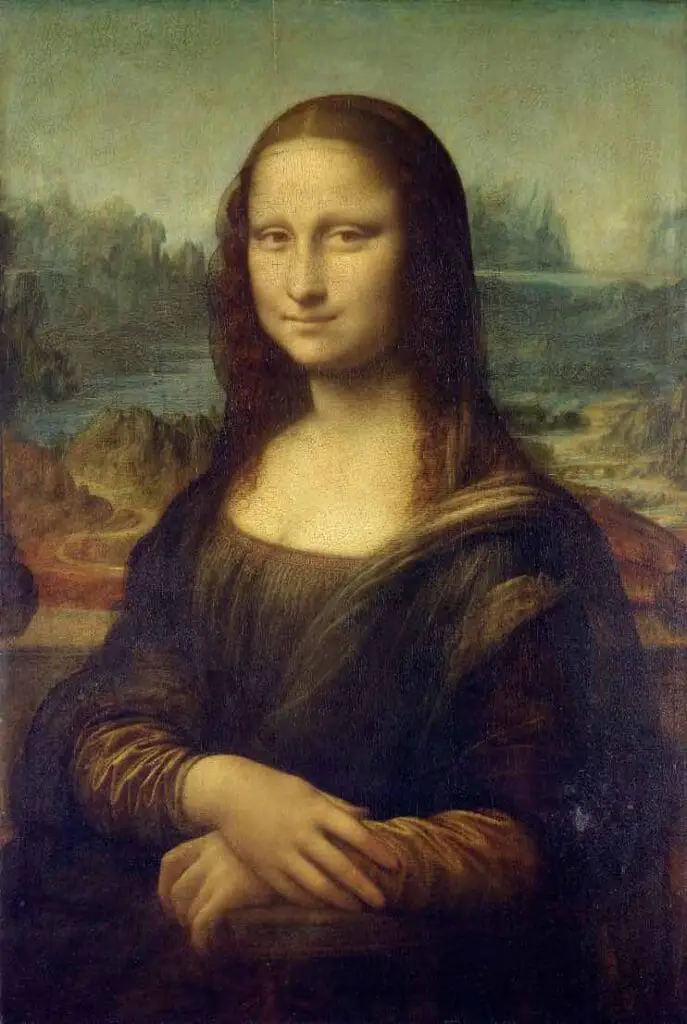
Arguably the most famous painting in the world, it’s known for the sitter’s enigmatic expression and the mysterious landscape in the background. Leonardo’s use of sfumato is particularly noteworthy.
The Last Judgment
Artist: Michelangelo
Year: 1536–1541
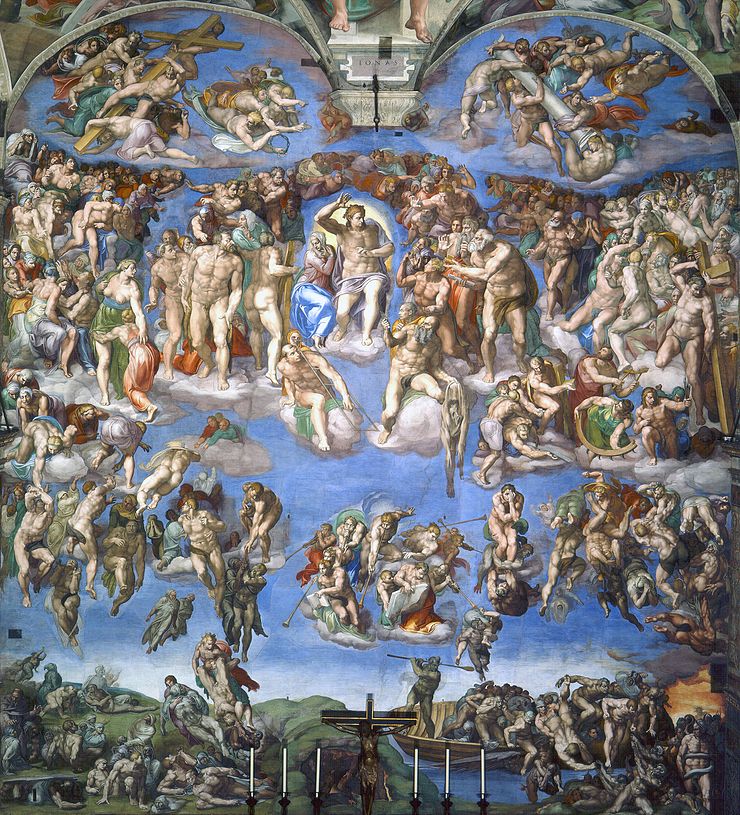
This monumental fresco covers the entire altar wall of the Sistine Chapel and depicts the Second Coming of Christ and the final judgment of souls.
Primavera
Artist: Sandro Botticelli
Year: Late 1470s or early 1480s

A complex allegory filled with mythological figures, it’s often interpreted as an illustration of the lush growth of Spring.
The Sistine Madonna
Artist: Raphael
Year: 1512–1513
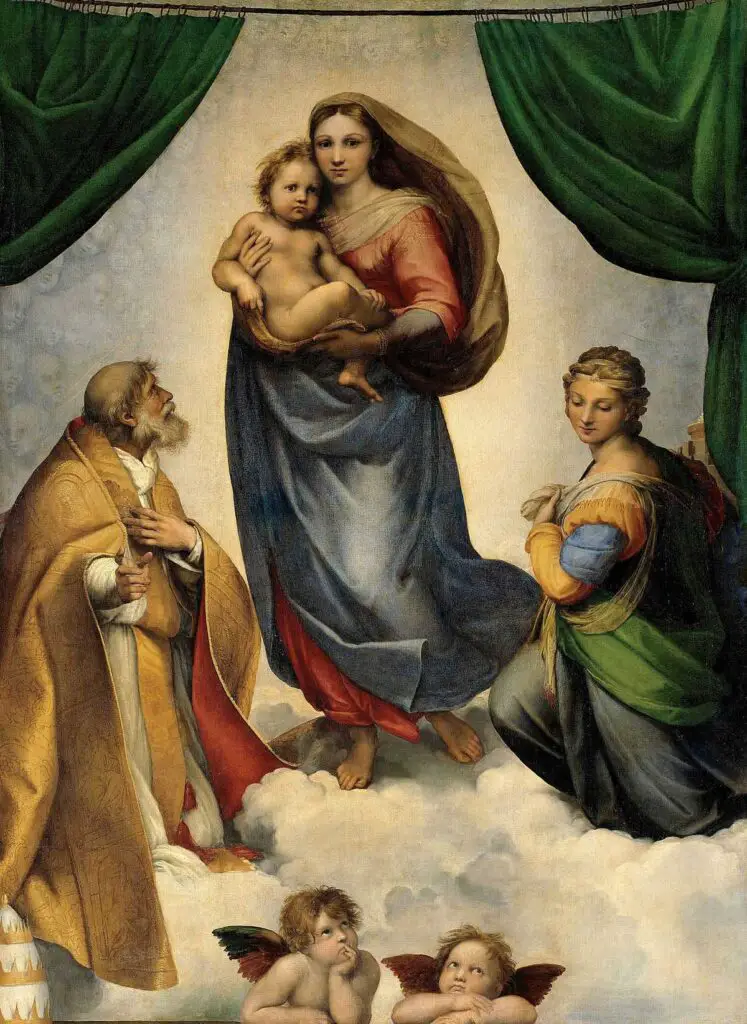
Famous for its depiction of the Virgin Mary, the Christ Child, and the two cherubs at the bottom, it’s a seminal work in devotional art.
Pieta
Artist: Michelangelo
Year: 1498–1499

This marble sculpture shows the Virgin Mary holding the body of Jesus after the Crucifixion. It is renowned for its emotional depth and exquisite craftsmanship.
Venus of Urbino
Artist: Titian
Year: 1538

An ode to marital love and fidelity, the painting is often cited for its sensual, almost tactile depiction of the female form.
David
Artist: Michelangelo
Year: 1501–1504
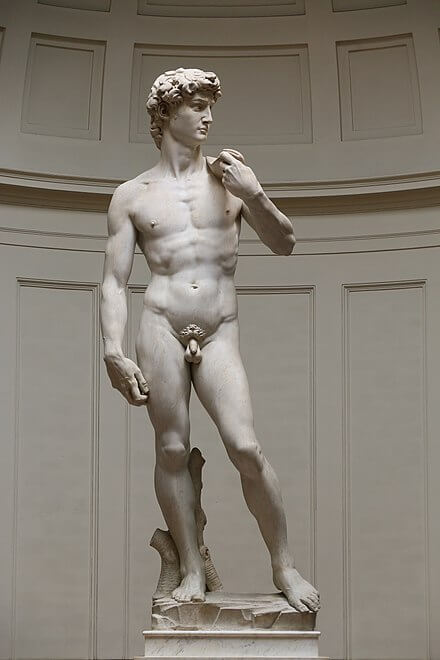
A monumental marble sculpture, David symbolizes human potential, captured before his battle with Goliath.
The Arnolfini Portrait
Artist: Jan van Eyck
Year: 1434

A pioneering work in oil painting, this portrait is lauded for its detail and the complexity of its symbolic elements, representing a merchant and his wife.
Assumption of the Virgin
Artist: Titian
Year: 1516–1518
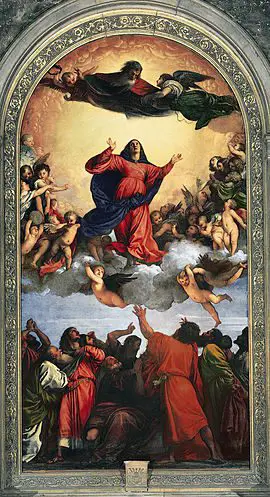
This masterpiece is lauded for its color composition and emotional intensity as it depicts the Virgin Mary ascending to heaven.
Bacchus and Ariadne
Artist: Titian
Year: 1520–1523

This painting is celebrated for its dynamic composition and vivid storytelling as it depicts the mythological story of Bacchus and Ariadne.
Adoration of the Magi
Artist: Leonardo da Vinci
Year: 1481–1482
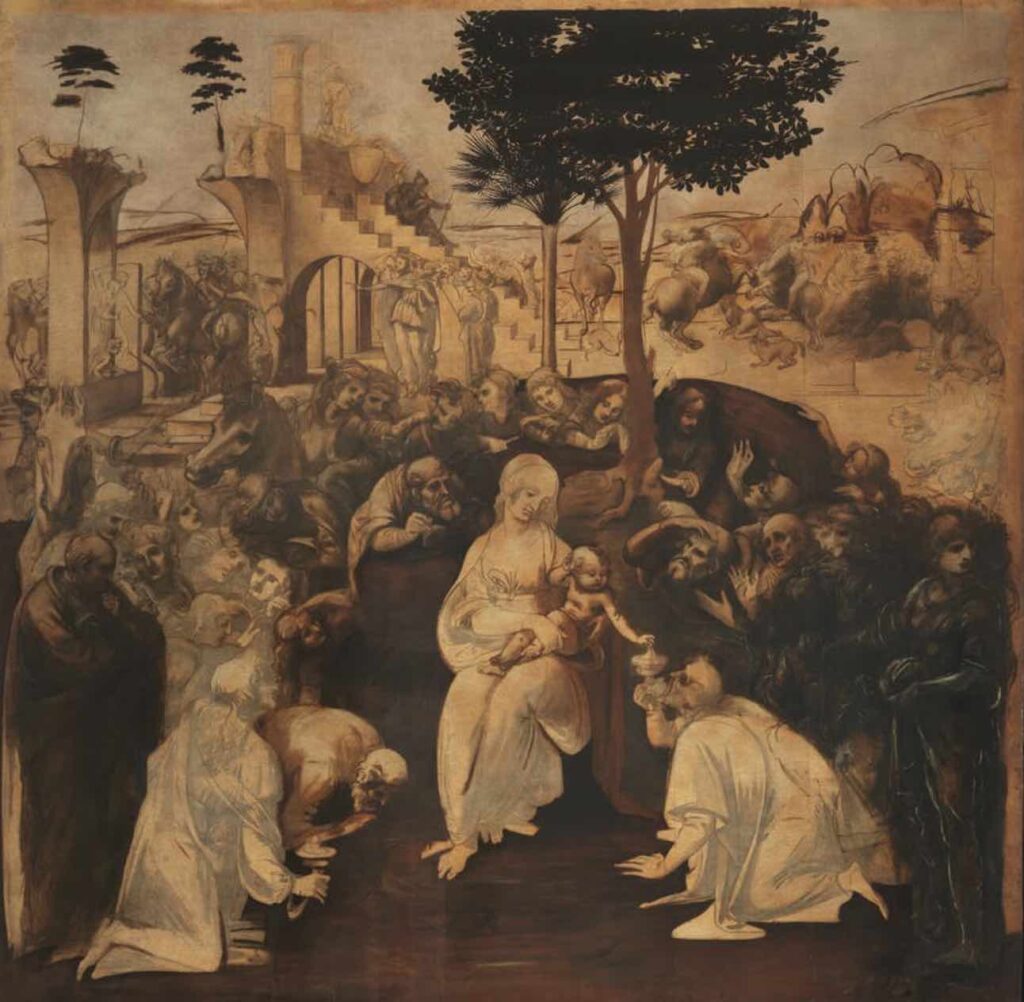
This is an unfinished work but is still valued for its intricate composition and deep symbolism surrounding the birth of Christ.
Sistine Chapel Ceiling
Artist: Michelangelo
Year: 1508 – 1512

A tour de force comprising numerous scenes from the Book of Genesis, this work is one of the most significant achievements in Western art.
Virgin of the Rocks
Artist: Leonardo da Vinci
Year: First version 1483–1486, second version 1495–1508
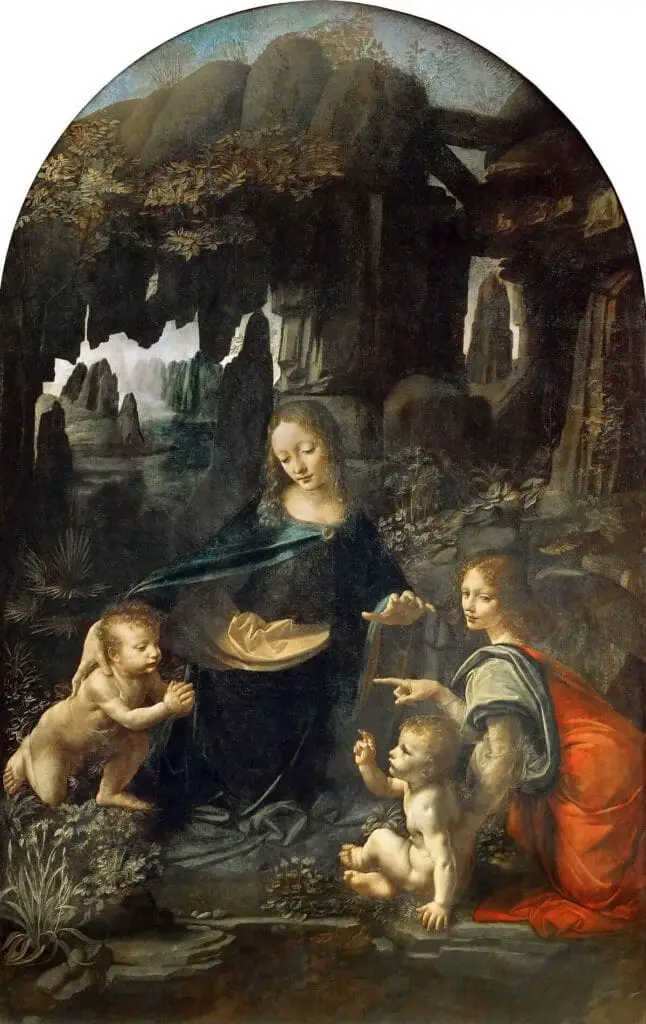
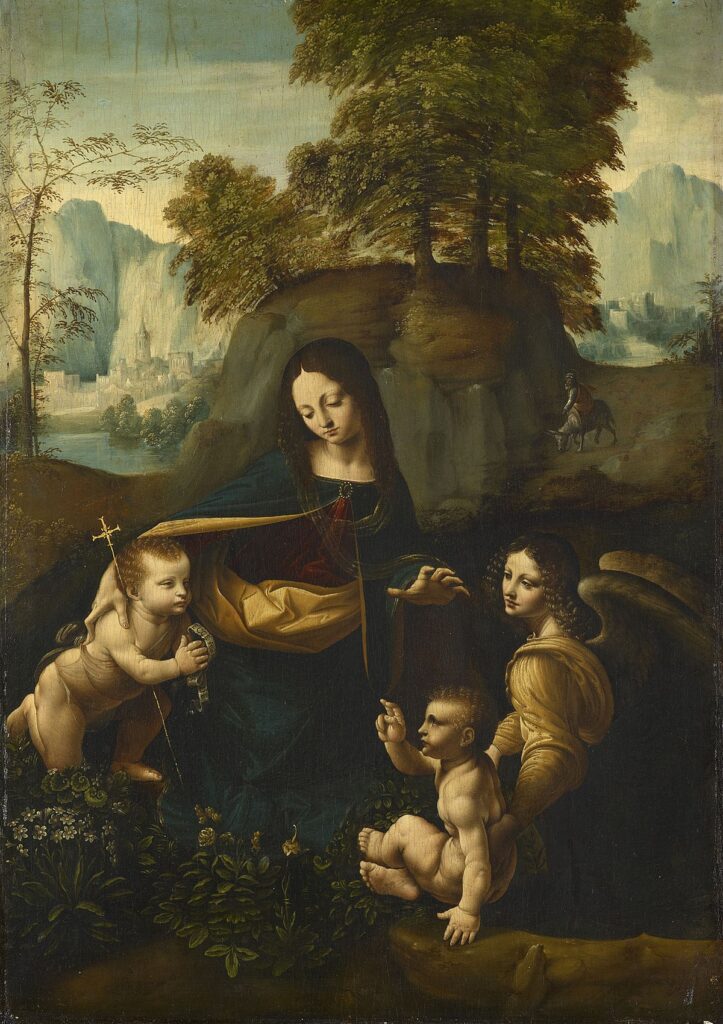
Famous for its atmospheric illusionism and the serenity of its figures, it’s another example of Leonardo’s mastery.
Self-Portrait at the Age of Twenty-Eight
Artist: Albrecht Dürer
Year: 1500

This painting is one of the earliest examples of a self-portrait and is famous for its highly detailed representation of the artist.
Madonna and Child
Artist: Duccio
Year: Late 13th–early 14th century
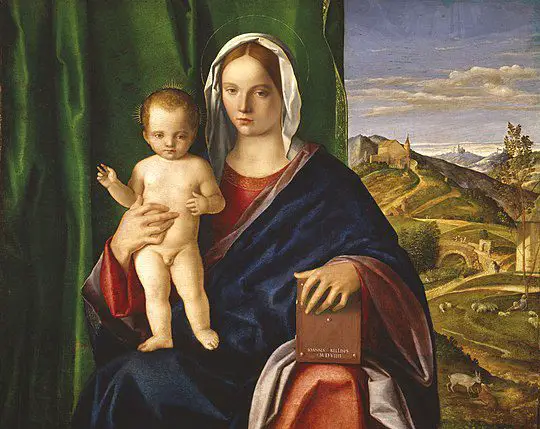
As a precursor to the full-blown Renaissance style, this work retains many medieval elements but moves towards naturalism.
Transfiguration
Artist: Raphael
Year: 1516–1520
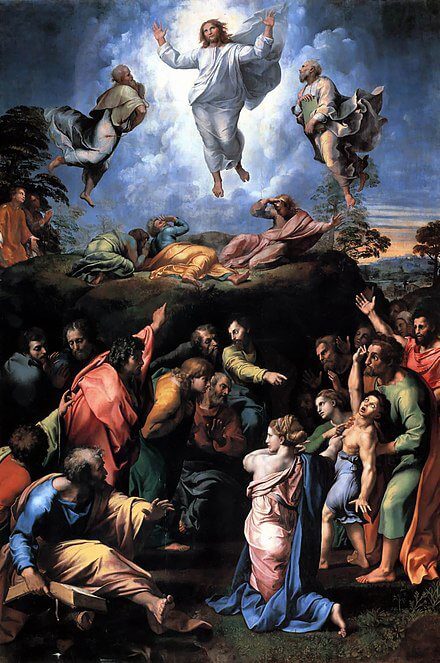
This was Raphael’s last work, a complex scene of the Transfiguration of Jesus and the healing of a demoniac boy.
Ognissanti Madonna
Artist: Giotto
Year: 1310s
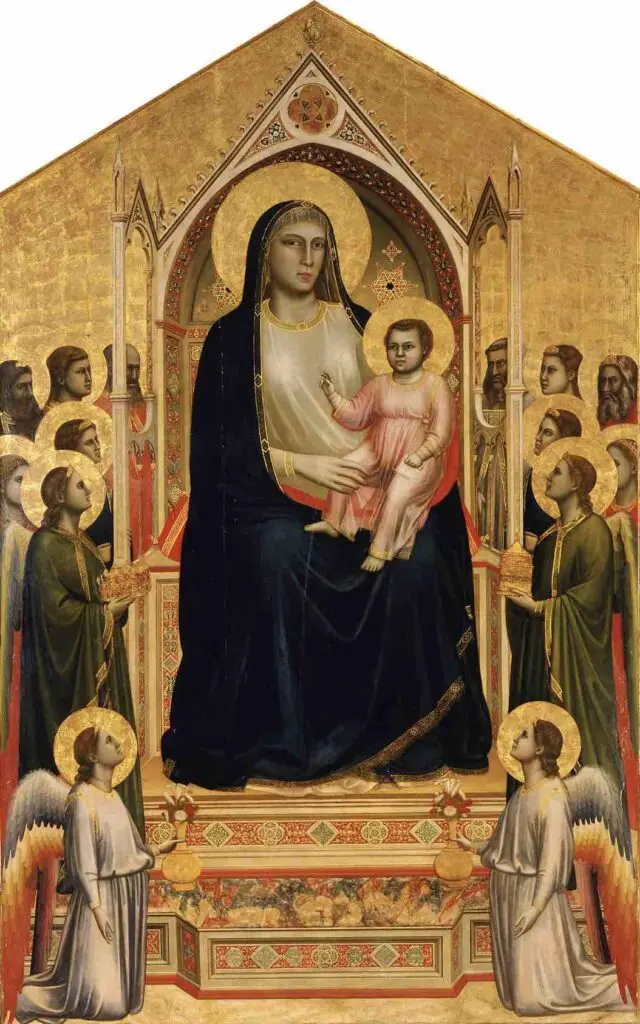
This work represents a pivotal moment in art history where emotional depth and naturalism take center stage.
Lamentation of Christ
Artist: Andrea Mantegna
Year: 1480s

Noted for its extreme foreshortening, the painting is a striking representation of the lifeless body of Christ.
Portrait of a Young Man
Artist: Raphael
Year: 1510s
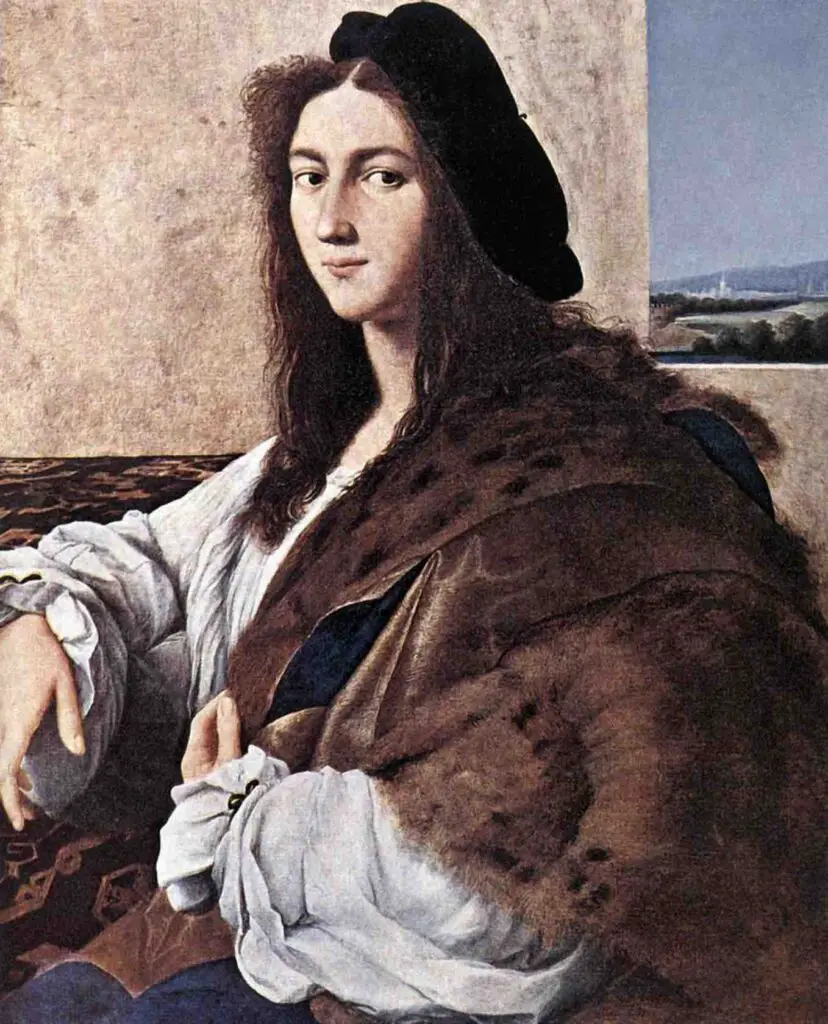
This painting is famous for its elegance and the psychological depth in depicting its subject, thought to be a self-portrait of Raphael.
The Ambassadors
Artist: Hans Holbein the Younger
Year: 1533
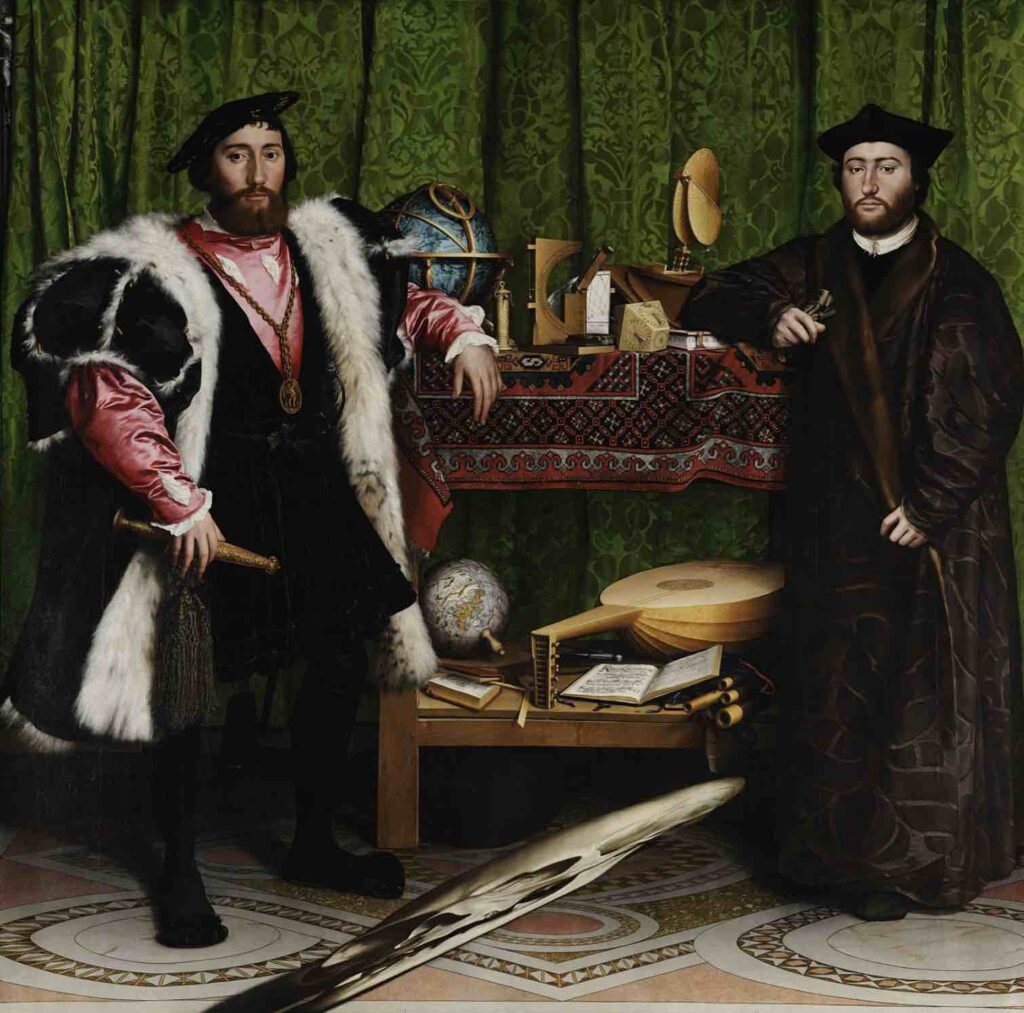
This work is an example of Northern Renaissance art and is famous for its anamorphic skull, seen only from a specific angle.
Each of these works has its place in the annals of art history, contributing to the richness and diversity of the Renaissance era.
The Renaissance is not just a chapter in art history; it’s a dialogue with the human condition—an exchange that started over half a millennium ago but continues to resonate today.
Studying this period is not just an academic exercise but a way to engage deeply with some of the most significant questions and achievements that have shaped human thought and creative expression. We can all learn something from the art produced in this era and time.
Anita Louise Art is dedicated to art education, great artists, and inspiring others to find and create their art. We love art that uplifts and inspires. #ArtToMakeYouSmile! #ArtToMakeYouHappy!
If you are interested to see any of my art, you can find out more by clicking here. If you are interested in what inspires me and my paintings, you can discover more by clicking here.
We have a free newsletter and would love you to be part of our community; you can subscribe to the newsletter by clicking here. If you have any questions, I would be happy to talk to you. You can reach me, Anita, by clicking here.
Subscribe to our Anita Louise Art YouTube Channel filled with great videos and information by clicking here.
Join us for our podcast “5 Minutes With Art.” Spend just 5 minutes a week with us to discover and learn about great art and artists. You can find out more about our podcast by clicking here.
Frequently Asked Questions
What is the Renaissance, and why is it considered a crucial period in art history?
The Renaissance was a transformative period in art history spanning from the 14th to the 17th century. It marked a shift from medieval traditions to a revival of classical ideals, innovation in artistic techniques, and a focus on human experience and emotion.
Who were some of the most influential artists of the Renaissance?
Artists like Leonardo da Vinci, Michelangelo, Raphael, Donatello, and Titian were among the most influential figures of the Renaissance, contributing significantly to the era’s artistic legacy.
What role did classical ideals play in shaping Renaissance art?
Classical ideals played a central role in Renaissance art, emphasizing a revival of ancient Greek and Roman artistic principles, including proportion, balance, and harmony.
How did the Renaissance impact artistic techniques and innovation?
The Renaissance witnessed unprecedented innovation in artistic techniques, including advancements in perspective, realism, chiaroscuro (light and shadow), and the use of oil paints.
Why is Leonardo da Vinci’s “Mona Lisa” considered a masterpiece of the Renaissance?
Leonardo da Vinci’s “Mona Lisa” is celebrated for its revolutionary use of sfumato (smoky effect), realistic portrayal of the subject, and enigmatic expression, making it an iconic representation of Renaissance art.
What is the significance of Michelangelo’s “David” in Renaissance sculpture?
Michelangelo’s “David” is a masterpiece of Renaissance sculpture, showcasing idealized human anatomy and embodying the classical ideals of beauty and proportion.
How did Raphael contribute to the Renaissance with his artwork “The School of Athens”?
Raphael’s “The School of Athens” is a fresco that exemplifies Renaissance philosophy, featuring a gathering of classical philosophers and conveying the spirit of intellectual inquiry and humanism.
What distinguishes Titian’s “Venus of Urbino” as a significant work of the Renaissance?
Titian’s “Venus of Urbino” is renowned for its sensuous portrayal of a reclining nude, showcasing the artist’s mastery of color, texture, and the representation of the female form.
How did the use of perspective contribute to the innovative nature of Renaissance art?
Renaissance artists revolutionized art by incorporating linear perspective, creating a sense of depth and realism that was previously unmatched in the history of art.
What impact did the Renaissance have on the transition from the medieval period to the modern age?
The Renaissance marked a crucial transition, bridging the gap between the medieval and modern periods. It not only transformed artistic techniques but also had a profound influence on culture, science, and philosophy, shaping the course of Western civilization.
Related Questions
What Was The Focus Of Renaissance Art?
The focus of Renaissance art was on the classics of Greek and Rome, humanist philosophy, and the study of the human figure. Realism was also an essential part of renaissance art. The great artists of the Renaissance also became great anatomists and studied human beings.
By clicking here, you can learn more by reading What Was The Focus Of Renaissance Art?
What Is The Importance Of Art From The Renaissance Period?
Renaissance art is essential as it was a time of rebirth and discovery. Artists like Leonardo da Vinci, Michelangelo, and Raphael were at the forefront of that change, creation, and discovery. Renaissance art has influenced art and artists for many centuries and continues to influence artists today.
By clicking here, you can learn more by reading What Is The Importance Of Art From The Renaissance Period?
Did Leonardo da Vinci Believe In God?
Leonardo did not tell us what his belief in God was, but there is evidence that is left that suggests that he held fast to many Christian ideals and beliefs. People such as the artist and author Giorgio Vasari, who knew him and wrote about him, spoke of his character and what a great man he was.
By clicking here, you can learn more by reading Did Leonardo da Vinci Believe In God?

